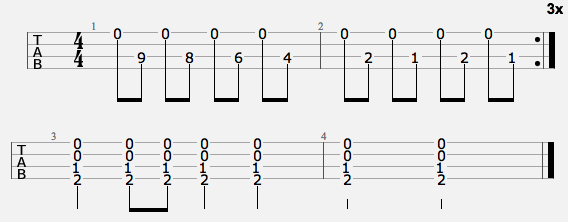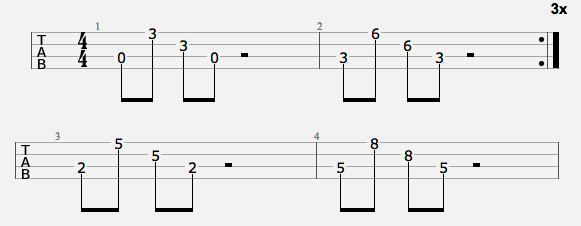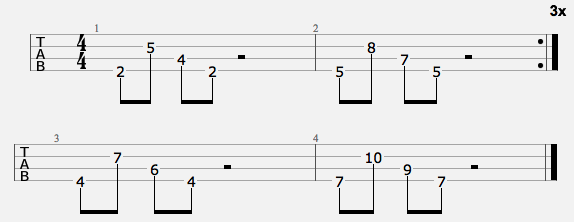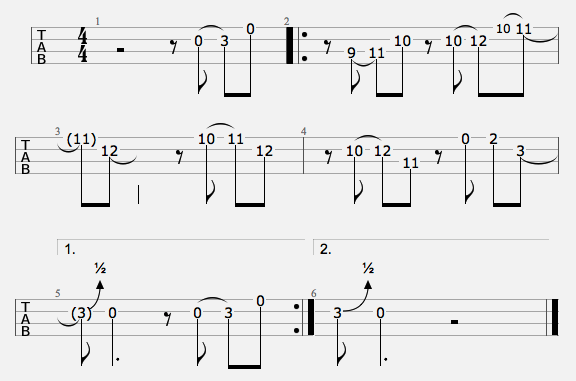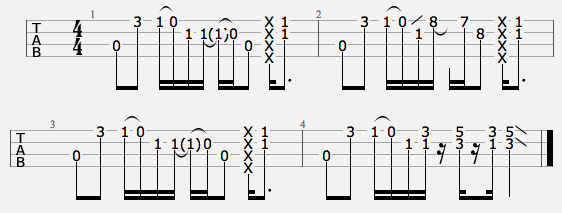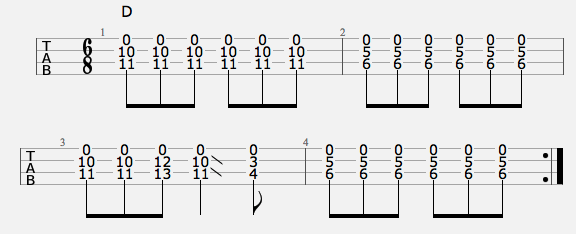I love making things and I love the things that people make so the internet has been a huge boon for me. But the collision of copyright and the internet has thrown a few problems in the way. Things that used to be no big deal – like covering a song on your ukulele – can land you in trouble. Creative Commons is a way to solve that problem.
I’ve put a few things up under a Creative Commons (CC) license (like I did earlier today and with the First Ukulele ebook – there’s a full list of my CC licensed stuff here). When I do I usually get a few people asking what the hell Creative Commons is. So I thought I’d do a post explaining it with the help of three ukulelists who use it: Craig Robertson, Kahiwa Sebire and Howlin’ Hobbit.
What is a Creative Commons license?
Creative Commons sits alongside copyright but waives some of the restrictions. When something you make is under copyright other people have to ask your permission before they can use it (the “all rights reserved” thing). But if you give it a Creative Commons license you tell everyone they’re allowed to use it in various ways without asking (“some rights reserved”). And you can choose what people are allowed to do with it and what they aren’t.
There are four main restrictions you can put on it:
Attribution (BY): people can use it so long as they give you credit.
Non-commercial (NC): People can use it so long as they don’t make money from it.
Non-derivative (ND): People can use it so long as they don’t change it in any way.
Share Alike (SA): People can make derivative works but if they do they have to give it the same Creative Commons license.
You can choose to combine these.
For example, Amanda Palmer’s Ukulele Anthem has a BY-NC-SA. The BY part means you’re allowed to put the MP3 up for download so long as you credit her and don’t make money from it. Because she hasn’t put a non-derivative on it that means you’re allowed to cover it and put it on YouTube. And it means I was allowed to write up the chords. But because it’s got a ‘Share Alike’ you have to put a Creative Commons license on your version too. YouTube makes that very easy to do.
And you don’t have to be Amanda Palmer famous for people to use your music.
Kahiwa: “Someone chose to use my song Lovestruck as the soundtrack to their short stop-motion animation video about making yoghurt. I love yoghurt. It was so out of the blue, I was chuffed!”
Why Give Your Music a Creative Commons License?
There are a whole range of reasons why you might want to. Although it seems like copyright gives you more control, Craig and Kahiwa both (in their very different ways) like the extra control it gives them over how their music is used and by who:
Craig: “I pretty much dislike the entire copyright process anymore. It started out to protect ‘creative property’ but has just become another way for the suits to control things. I don’t believe most creative people (myself included) care about the ‘business’ side of art, music, whatever; as much as they care about the creative side… Creative Commons offers an alternative to the protecting creative property… and it is based on common sense, which first attracted me. If you play a song of mine, fine, if you make money doing it… well, give me some.”
Kahiwa: “I’m quite happy for people to share my music, do stuff with it, so the CC licensing process seemed like a good compromise between retaining some ownership (in the form of attribution and restriction on commercial use) and allowing the legal distribution of my music.”
Hobbit was inspired by others’ use of Creative Commons:
Hobbit: “Mostly a desire to avoid feeling like a hypocrite but also an extreme disgust with what’s happened to copyright law. Many of my personal heroes in this new musical landscape we’re living in use CC (and the pay-what-you-think-it’s-worth model) and I have long been singing their praises. I thought it was about time to walk my talk.”
Although I agree with Craig and Hobbit that copyright laws are dangerously restrictive, I have other reasons. There’s a lot of CC licensed stuff on the site (like photos on Christmas quizzes and on ebook covers, and music on the podcast) and I build on stuff that’s in the public domain. So it’s only fair that I give something back.
And giving my the First Uke ebook a CC license has definitely helped it spread. Every year the Uke for Xmas? post gets lots of attention, tweets, mentions, likes. And it gets sent to people who are just picking up the ukulele. Getting the site in front of people like that is worth much more to me than whatever I could charge for it.
Plus, it makes things easier:
Craig: “It actually relieves a lot of stress connected with ‘copyrighting’ my songs. And headache. It makes recording songs and putting them out more reasonable. I don’t worry about other musicians stealing my songs…I worry about businessmen stealing my songs.”
So How Am I Supposed to Make Money?
You might think that giving your music away for free would mean you didn’t make any money. But all three had plenty of people happy to pay for their music:
Hobbit: “Often they pay *much* more than I would have put my “set price” at. Your fans are going to want to support you, so get out of your own way and give them the opportunity.”
Kahiwa: “I was blown away that people would pay for it (or individual songs) when they had the option of a free download from bandcamp or soundcloud. Most of those people I know and they’re music-related friends/acquaintances from the internet. None of my family or real-life friends have paid though ;)”
Craig: “People have a tendency to buy music that they have already heard. That is the way pop music has always been marketed. People would hear it for “free” on the radio, and then go out and buy it if they like it.”
And getting your music out there helps you make money in other ways:
Kahiwa: “I got more for an appearance at a community ukulele festival in the Blue Mountains (NSW, Australia) than all of the song download proceeds put together.”
And they’re not alone. Nine Inch Nails and Jonathan Coulton have made serious bank from CC licensed music.
As Craig points out:
Craig: “A Creative Commons license, intelligently applied will actually protect the songwriters financially.”
How Do You Give Your Stuff a Creative Commons License?
Lots of sites will make it really easy to do. YouTube, Flickr and Bandcamp all give you a option to give your stuff a Creative Commons license. If you look at any of my YouTube videos that are my own compositions or works in the public domain they have a Creative Commons license. Like this one.
Otherwise you can go to this page on the Creative Commons site and make your own.
Even if you decide not to put a CC license on your music (or photos, or videos, or writing, or knitting patterns or whatever) I hope you take advantage of the stuff that does have a CC license. You get to use great stuff and not worry about infringing or getting sued. Here’s a good place to start your search.
Pick up some Creative Commons licensed music on Hobbit, Craig and Kahiwa’s Bandcamps:
Howlin’ Hobbit
Craig Robertson
Kahiwa Sebire
And, yes, this post has a CC license.

This work by Ukulele Hunt is licensed under a Creative Commons Attribution 3.0 Unported License.

